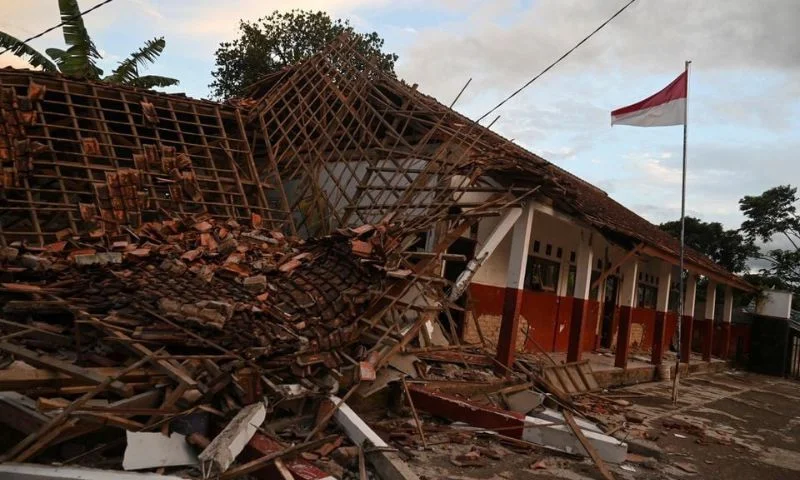A significant seismic event rocked the Bali Sea region in Indonesia on Tuesday, as reported by the European-Mediterranean Seismological Centre (EMSC). The earthquake, boasting a magnitude of 7.0, caught the attention of global seismologists due to its intensity. Notably, the quake’s epicenter was situated at an astounding depth of 516 kilometers (approximately 320.63 miles) beneath the Earth’s surface.
The United States Geological Survey (USGS) swiftly acknowledged the seismic activity, taking to social media to provide preliminary information. The USGS tweeted, “Notable [earthquake], preliminary info M 7.1,” further emphasizing the event’s substantial impact.
Despite the quake’s formidable force, the US Tsunami Warning System promptly reassured the public that there was no imminent threat of a tsunami. This reassurance came as a relief, particularly given the earthquake’s origin deep within the seabed.
This recent seismic occurrence follows in the wake of a devastating event from the prior year. In that incident, Indonesia’s Cianjur town, nestled in western Java, bore the brunt of a powerful quake that resulted in a tragic loss of life. Reports from local authorities indicated that at least 268 lives were claimed in the wake of the disaster.
The Chief of Indonesia’s Disaster Agency, Suharyanto, conveyed the extensive toll the disaster took on the community. Over 1,000 individuals suffered injuries as a result of the quake, and the upheaval forced a staggering 58,000 people to flee their homes. The destruction wrought by the seismic activity was most poignant in the realm of housing, with a heartbreaking 22,000 houses reduced to ruins.
In the aftermath of the calamity, the gravity of the situation became evident as casualties mounted and officials braced for an even higher death toll.
The upheaval was generated by a relatively shallow earthquake measuring 5.6 magnitude, striking the mountainous landscape of West Java, a region known for its high population density. The impact was severe, leading to the burial of an entire village under a landslide, underscoring the force of the tremors.
The complexity of the rescue operations was exacerbated by treacherous conditions, including landslides and challenging terrain. Henri Alfiandi, the head of Indonesia’s National Search and Rescue Agency (Basarnas), revealed the difficulties faced by emergency responders in navigating these obstacles.
Indonesia’s precarious position along the “Ring of Fire,” a volatile zone characterized by heightened tectonic activity, makes it prone to devastating earthquakes. The nation has endured a history of seismic events, with one of the most catastrophic occurrences being the 2004 earthquake near Sumatra Island. This triggered a massive tsunami that wreaked havoc across 14 nations, resulting in the tragic loss of approximately 226,000 lives.




